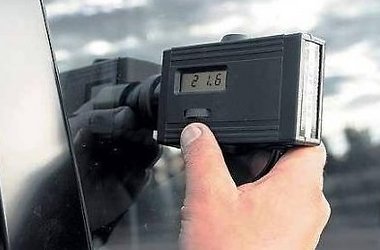How to avoid a fine for toning?

1) The inspector will be able to draw up a protocol for toning and remove the numbers only after measuring the light transmittance of the glasses. If the crew does not have the equipment - you can safely wave the handle and go further under the sad sight of the inspector.
2) If there is any apparatus, check for a valid certificate and seals on the case. In addition, the permissible power of the device is 12 volts (plus minus 0.6 volts), we also check the power supply to which the inspector connects the device. Do not connect to your cigarette lighter. Any discrepancy (for example, a Chinese battery without identification marks) is a goodbye, a traffic cop.
3) Find out the thickness of your glasses. Most instruments are not certified for thickness measurements of thicknesses of 7.5 mm, thick glasses can only be measured with BLIC + (simple Blick does not roll) and TONIC. Declare to the inspector that the thickness of your glass is 9mm, and he does not have the right to make gauges. Let him check.
4) Many devices (the same BLIC) is able to measure light transmittance at temperatures up to -10 degrees. But according to GOST 27902, measurements can be made only in warm weather (from 15 to 25 degrees Celsius), so that the device can be equipped with a large striped bolt. Permissible humidity according to GOST - 45-80%, atmospheric pressure - 645-795 mm. It is forbidden to make measurements in the rain and mud, however there are no restrictions at the time of day - they can measure at least in the dead of night.
5) In order to establish the air temperature, relative humidity and atmospheric pressure, the inspector should have an attested hygrometer, a barometer and a thermometer. Otherwise, it can not be determined that external conditions allow measurements to be taken.
6) You have the right to require 2 witnesses, and the measurement should be made at 3 different points on 3 samples (STB 1640-2006). If the inspector, in the presence of witnesses (or at least the camera), made a stop at 1 point and began compiling the protocol, he is declared invalid.
The probability that all these conditions at the time of stopping your car will be met, confidently tends to zero. Nevertheless, if the measure still took place and met all the requirements, we can not lose numbers. We will fight.
TRY 1
We recall the old norms, as well as the controversial regulations.
1) According to the Order of the Ministry of Internal Affairs No. 1240 of 07.12.2000 and the Resolution of the Plenum of the Supreme Court of the Russian Federation of 05.12.2008, inspectors of technical supervision (NOT DPS inspectors) can check the glass transmittance only at stationary posts.
2) According to the fresh orders of the Ministry of Internal Affairs No. 297 and No. 329, it is possible to check the technical condition of the car (including the light transmittance of the windows) in the absence of a valid vehicle inspection certificate.
TRY 2
On posts more often only a copy of certificates and acts of verification for devices. These copies are certified by a blue stamp of the traffic police, but with confident poker, you can tell the inspector that the copy must be notarized - I've repeatedly met on the Internet stories where such a bluff rolled. The inspector did not want to argue and let go of the car with the driver.


Comments
When commenting on, remember that the content and tone of your message can hurt the feelings of real people, show respect and tolerance to your interlocutors even if you do not share their opinion, your behavior in the conditions of freedom of expression and anonymity provided by the Internet, changes Not only virtual, but also the real world. All comments are hidden from the index, spam is controlled.